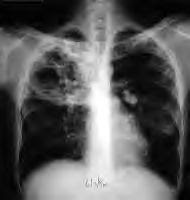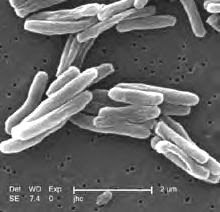Star-Gazette (www.stargazette.com). A pathologist full of life Retired Elmira physician, 90, spends time distance running and taking scientific expeditions. Not many people can say they've shared space with mountain gorillas. But Goryun Nigogosyan can say not only that, but also that he has survived tuberculosis, has felt the flippers of leatherback turtles and has performed thousands of autopsies. Nigogosyan of Elmira, is a retired pathologist and former chief of the department at St. Joseph's Hospital. " Nigogosyan was born in Istanbul, Turkey, of Armenian descent. His parents were teachers. For Nigogosyan, however, there was never a doubt in his mind that he would go into medicine. "I wanted to be (Louis) Pasteur," he says. Nigogosyan's father gave him biographies to read, and after reading about Pasteur's life story, he says his mind was made up. He also says his career options were limited. "Being an Armenian in Turkey was difficult ... there was such hatred between the Turks and the Armenians ... and the prejudice was terrible," Nigogosyan says. That's why Nigogosyan graduated from Istanbul Medical College -- with a great desire to leave his native country. Life in Switzerland. After spending three years in the Turkish army (from 1942 to 1945), Nigogosyan ended up in Switzerland, working as an attending physician at a world-renowned tuberculosis sanatorium in Davos. It was here, at Wald Sanatorium, where he met his future wife, Jeannine. She was a nurse from Belgium, and Nigogosyan says he vividly remembers the moment he met her. Numerous tuberculosis sanatoriums were in operation at the time, but Wald Sanatorium was perhaps the most prestigious. Only the wealthy could afford to stay there, 5,000 feet up a mountain, in the middle of the woods, and people traveled internationally for treatment. (One of Nigogosyan's patients was the daughter of the king of Nepal.) Goryun and Jeannine Nigogosyan contracted tuberculosis while working in Davos, and both became patients for a while. Physicians at the sanatorium prescribed programs for patients, depending on their specific condition, fever and X-ray results, explains Nigogosyan. People had to adhere to certain diets and exercise regimens. And all patients had their own chaise lounge on outdoor verandahs, on which they had to rest for certain periods of time in the morning and afternoon, with the "healing" air of the Alps to assist them. "This was the way tuberculosis was treated then," he says
New Zealand Herald
Nurses check students after 17-year-old has TB
5:00AM Tuesday August 28, 2007 By Martin Johnston
Lynfield College students are being assessed for contact with tuberculosis after a 17-year-old was diagnosed with the disease and admitted to Auckland City Hospital.The student was confirmed last week as having tuberculosis in the lungs and is receiving treatment in a negative-air-pressure isolation room at the hospital designed for patients with infectious diseases. Medical officer of health Dr Greg Simmons, of the Auckland Regional Public Health Service, said yesterday nurses were at the Auckland school to identify students and teachers who had been in contact with the pupil.
Lynfield College has about 1800 students.
"Mantoux" skin tests would be done on school and home contacts of the 17-year-old, he said.
A positive test result indicates the person has been infected with the bacterium, but only 10 per cent of those infected develop active, infectious disease. The rest have latent TB infection - the bacteria become "walled off" by scar tissue. The disease can flare up at any time in these people when their immunity declines, more commonly in the elderly or those with other diseases like cancer or diabetes.
"If positive, those people would be offered treatment to stop them going on to develop tuberculosis disease," said Dr Simmons. "It's not a very nice disease, but it's one that develops slowly and certainly there are cures."
He said the 17-year-old was "not extremely sick. There are no major concerns in terms of the case".
The Government in 2004 extended TB screening requirements for migrants because of increasing numbers of foreign travellers coming to New Zealand. The Health Ministry says each TB case can infect 10 to 15 people in a year. More than half of New Zealand's 300-400 cases a year are in people born overseas.
Tuberculosis
* 10 per cent of those who catch the bacteria will develop "active" disease.
* Main symptoms: cough for more than three weeks, possibly blood in spit, weight loss, sweating, especially at night, fever, constant tiredness, breathlessness.
* Spread by coughing and even by singing.
* The bacteria can stay in the air for several hours but it usually takes many hours of close contact with an infectious person to catch the infection.
* 137 cases were reported nationally in the first half of this year.
* Treated with antibiotics.
Positive TB tests for Island cabbies
Cheryl Chan, The Province
Published: Monday, August 27, 2007
The Vancouver Island Health Authority is trying to quell fears a tuberculosis outbreak in Port Alberni may have spread to the general population after six cab drivers tested positive in skin tests for TB.
"None of them have the disease," said medical health officer Dr. Sharmaine Enns. "Don't be afraid of taking a cab or walking down the streets of Port Alberni."
There have been 30 confirmed cases of active tuberculosis in Port Alberni since May 2006.
Three people have died, but for reasons "completely unrelated to TB," said Enns. A third has completed treatment and is considered cured. The rest are on antibiotic treatment. None is contagious.
Health authorities have screened more than 2,000 people and identified 58 patients who are infected with the bacteria. They have been put on preventive treatment to ensure the infection does not develop into the full-blown disease.
"We've been looking hard for the infection," said Enns. "We cast our nets very far for contact follow-up."
One of the contact follow-ups led to United Cabs in Port Alberni after a driver was exposed to a person who has active TB.
The company's 30 cab drivers were screened earlier this month. Six tested positive for the infection.
"All it means is that they have been exposed to TB some time in their past," said Enns. "They are now part of [the] one-third of the world [population] who has TB infection."
The 30 people who were diagnosed with active tuberculosis are linked to each other, said Enns. "They're not random cases." Most are native.
Last year, there were 331 cases of tuberculosis reported in B.C., mostly in Vancouver and Richmond. The central island, which includes Port Alberni, Nanaimo and Parksville, averages about five new cases of active TB a year.
Enns believes the outbreak has peaked. "In the last two or three months, we have only received one new active case."
But she estimates the task of notifying and testing people who may have come in close contact with the patients with active tuberculosis will take a year or two more.
Port Alberni Coun. Cindy Solda, in charge of the health portfolio, said the outbreak has put a spotlight on a disease people don't really think about.
But while she is not concerned about tuberculosis on a personal level, she said the city will ask a health- authority representative to attend the next council meeting in September to talk to townspeople.
"The rumours are all over town . . . We need to know more."
chchan@png.canwest.com
FACTS ABOUT TUBERCULOSIS, OR TB
- TB is transmitted when a person with infectious TB coughs or sneezes and the airborne germs are inhaled by someone nearby.
-There are two types of TB. Latent TB infection occurs when a person inhales TB germs but their immune system suppresses the bacteria. The patient will not exhibit symptoms and is not contagious. TB disease occurs when the germs activate and causes damage to organs.
-Tuberculosis is curable and treatment is free of charge in B.C
NBC 30.com
DANBURY, Conn. -- Before going to school, dozens of students and staff at Danbury High School are being asked to be tested for tuberculosis after a student tested positive for the disease earlier this month.
That student was diagnosed with tuberculosis over the summer, but was sick with a fever during classes last winter.
To be safe, school officials said they invited students and staff who were in contact with that person to be screened.
Catherine Richard, the Principal, said, "I think the goal is to be as cautious as we can be. We don't expect to find any other students or staff infected but we want to be as cautious and careful as we can with our students and our staff."
All of the students and staff tested will have to come back in two to three days so nurses can see if there's any reaction on their skin.
Those results will be just in time for the start of the school year on Friday.
WHAT'S NEW IN TUBERCULOSIS
Wednesday, 29 August 2007
Subscribe to:
Post Comments (Atom)





No comments:
Post a Comment